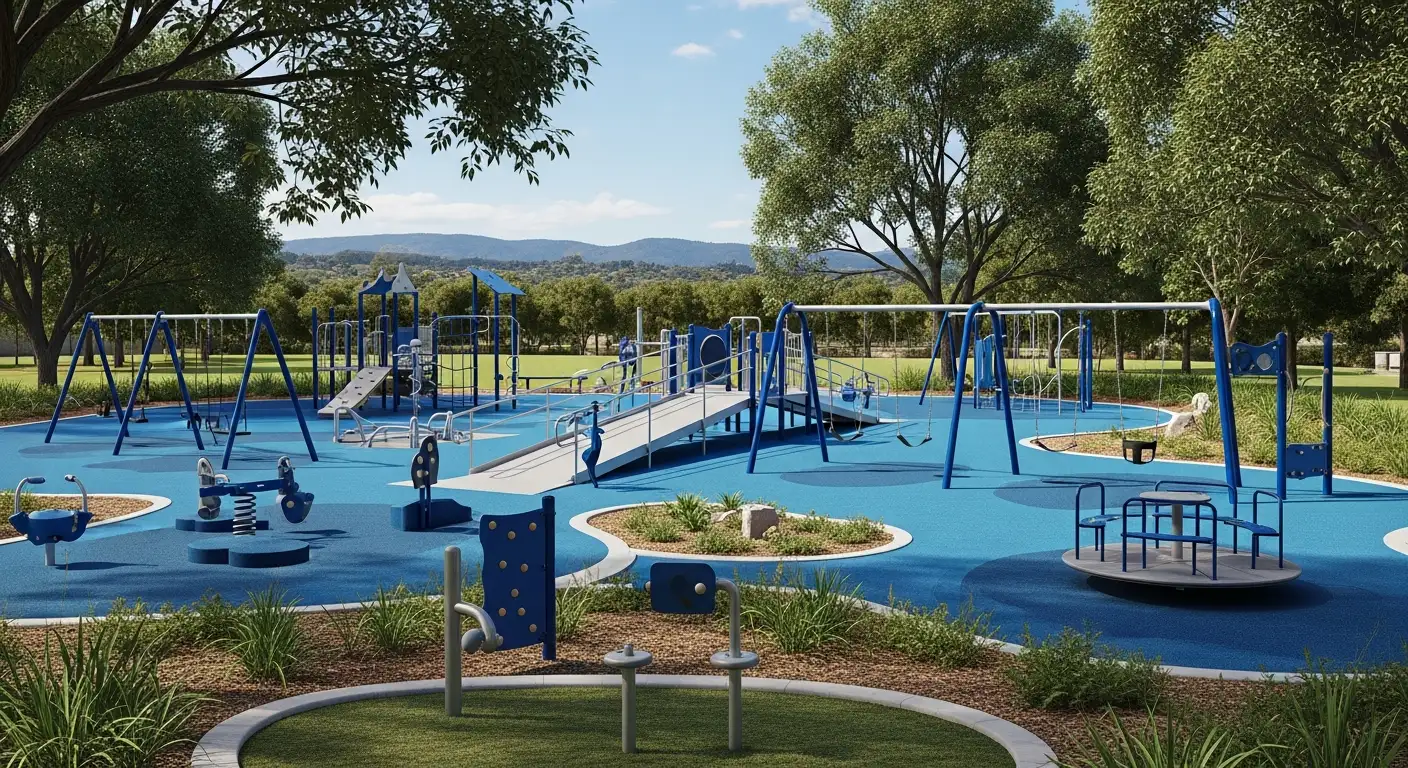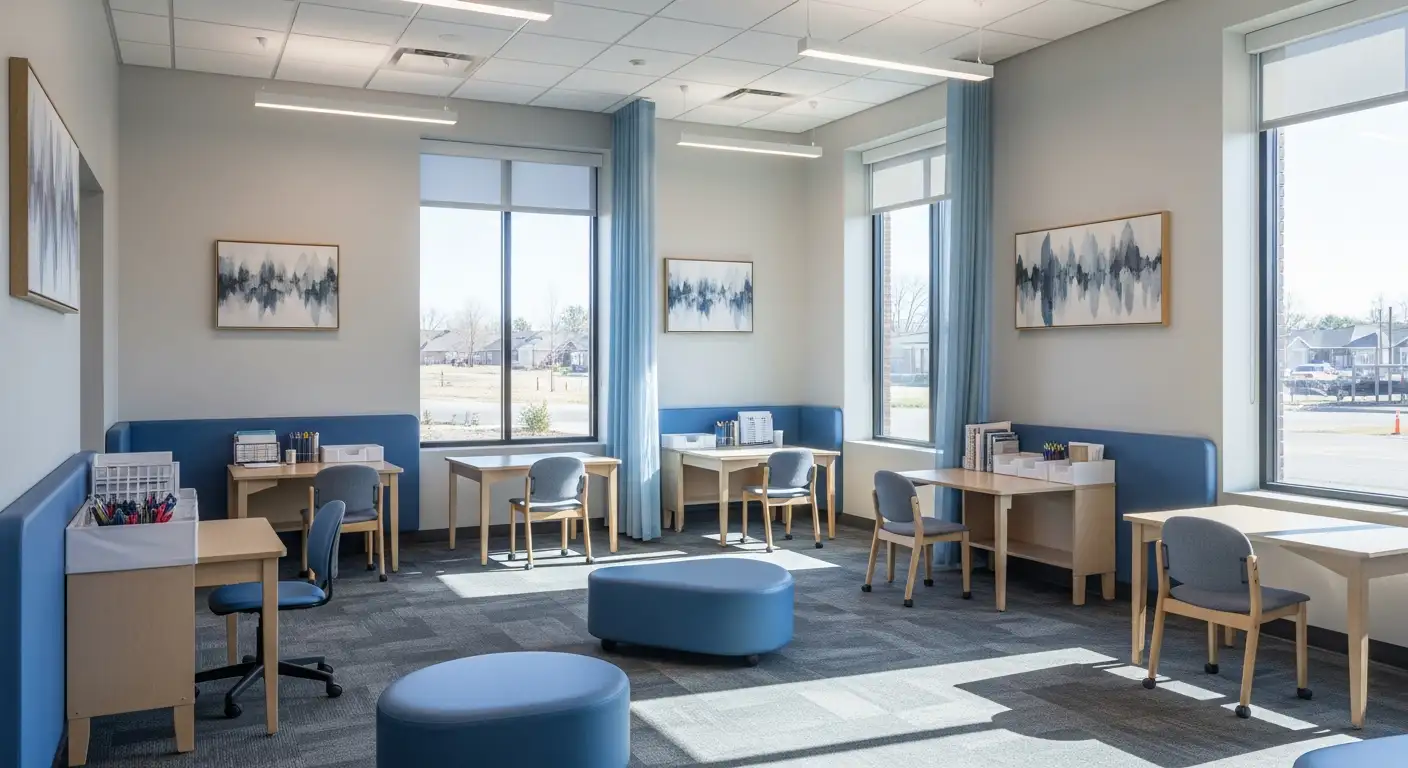Autism and Cancer
Unraveling the Complex Relationship Between Autism and Cancer

Understanding the Intersection of Neurodevelopmental and Oncological Conditions
The relationship between autism spectrum disorder (ASD) and cancer has garnered increasing scientific interest, driven by evidence of overlapping genetic pathways, molecular mechanisms, and epidemiological patterns. While early research suggested a generally lower incidence of cancer among autistic individuals, recent studies reveal a nuanced picture with specific risk factors, comorbidities, and genetic overlaps contributing to the overall risk landscape. This article explores these complex links, shedding light on shared biological pathways, genetic factors, and the potential implications for targeted treatments and future research directions.
Epidemiological Evidence and Cancer Risks in Autism
Several large population-based studies have examined the relationship between autism spectrum disorder (ASD) and the risk of developing various types of cancer. These studies often utilize extensive health register data, such as those from Nordic countries, and focus on individuals diagnosed with ASD compared to control groups. Surprisingly, these investigations reveal that overall cancer incidence among individuals with ASD is lower than in the general population.
In one comprehensive study involving over 2.3 million individuals, only 1.3% of those with ASD received a cancer diagnosis, compared to 3.9% in controls. This significant reduction was especially notable in children under 14 years old, where the odds of cancer were reduced by 94%. The data suggest that autism by itself does not increase the risk of early-life cancers. Instead, the elevated risks are primarily associated with ASD when accompanied by certain comorbidities such as birth defects or intellectual disabilities. For example, individuals with both ASD and birth defects face twice the risk, and those with ASD, birth defects, and intellectual disability have nearly fivefold increased odds of cancer.
Research points to specific cancer types that may be more prevalent among the autistic population. Notably, cancers of the eye, central nervous system, thyroid, and genitourinary organs have been reported more frequently. These findings imply that the relationship between ASD and cancer is complex and influenced by genetic factors shared across both conditions.
The association between autism and cancer varies across age groups, with younger children showing a more pronounced protective effect against cancer in ASD. As individuals age, the pattern remains under study, but the current evidence emphasizes the importance of considering co-occurring health issues in assessing cancer risk.
While the overall trend points to a lower incidence, ongoing research continues to explore whether genetic overlaps—such as mutations in genes like PTEN, NF1, or TSC1—may contribute to biological mechanisms balancing cellular growth in both autism and cancer. These insights could eventually inform targeted screening and personalized treatment strategies for individuals with ASD who are at risk.
| Study Aspect | Findings | Additional Notes |
|---|---|---|
| Overall cancer risk in ASD | Lower than general population | 1.3% vs. 3.9%, especially in children |
| Elevated cancer types | Eye, CNS, thyroid, genitourinary | Specific types may have genetic links |
| Risk variations | Higher with comorbidities | Birth defects and intellectual disability increase risk |
| Age-related differences | Stronger protective effect in children | Further studies needed for adults |
| Genetic influences | Shared pathways and mutations | PTEN, NF1, TSC1, and others involved |
Understanding these epidemiological patterns helps in developing better clinical care and may guide future research into genetic and molecular mechanisms that bridge autism and cancer.
Genetic and Molecular Foundations of Autism-Cancer Links

Are there genetic or molecular links between autism and cancer?
Recent scientific investigations have uncovered significant genetic and molecular intersections between autism spectrum disorders (ASD) and various cancers. These links are primarily evidenced through shared risk genes and biological pathways that influence cell growth, development, and metabolism.
One of the most prominent overlapping genes is PTEN, a tumor suppressor gene involved in regulating cell proliferation. Mutations in PTEN are associated with autism, particularly in individuals with macrocephaly, and also significantly increase the risk of cancers such as breast, thyroid, and brain tumors. Studies estimate that about 2% of all autism cases involve PTEN mutations, which are linked to increased cell growth and tumor formation.
Other genes implicated include TSC1, TSC2, CHD8, and genes involved in critical signaling pathways like PI3K-AKT-mTOR and MAPK. These pathways are fundamental in controlling cell growth, differentiation, and survival. Mutations or dysregulation in these pathways are common to both ASD and various cancers. For example, TSC1 and TSC2 mutations, responsible for tuberous sclerosis, are associated with neurodevelopmental features including autism and tumor development.
Genome-wide sequencing studies further support this connection, revealing a significant overlap in risk genes for autism and cancer. Nearly 138 genes have been identified as shared between the two conditions, many involved in chromatin remodeling, DNA repair, and genome maintenance. Genes such as ERCC6, SMARCA2, ATRX, and UBE3A are key players in maintaining genomic stability; mutations here can predispose individuals to both neurodevelopmental anomalies and oncogenic transformations.
Mutations are classified broadly into germline and somatic types. Germline mutations are inherited and present in all cells, influencing early development and increasing neurodevelopmental disorder susceptibility along with cancer risk. Somatic mutations, typically acquired during a person's life, are common in sporadic cancers but can also contribute to neurodevelopmental conditions through processes like mosaicism.
The overlap of mutations and pathways underscores a biological continuum where dysregulation in cell growth, repair mechanisms, and metabolic processes underpins both ASD and cancer. These insights open possibilities for targeted therapies; for instance, drugs targeting the mTOR pathway are being explored to treat both autism subtypes linked to PTEN mutations and certain cancers.
In summary, current evidence supports a close molecular relationship between ASD and cancer, mediated through shared genes and pathways that regulate cell proliferation and genome integrity. Enhancing our understanding of these shared mechanisms may pave the way for innovative treatments and early intervention strategies.
Shared Biological Pathways Influencing Both Conditions

What are the shared biological pathways involved in both autism and cancer?
Research has identified several common pathways that connect autism spectrum disorder (ASD) and cancer. These include major signal transduction pathways responsible for controlling cell growth, proliferation, differentiation, and metabolism. Notably, pathways such as PI3K-Akt-mTOR, Ras-ERK, WNT, and Notch are frequently dysregulated in both conditions.
The PI3K-Akt-mTOR pathway is central to cellular energy regulation and growth. Its abnormal activation can promote excessive cell proliferation seen in cancer, and also interfere with neuronal development in ASD. Similarly, the Ras-ERK pathway influences cell cycle progression and differentiation. Mutations or alterations in genes like PTEN, NF1, TSC1/2, and others impact these pathways, leading to overlapping features of abnormal growth and neurodevelopmental issues.
Genes such as CHD8, involved in chromatin remodeling and gene regulation, are linked to both autism and tumor formation. Dysfunctions in DNA repair and transcription regulation within these pathways can cause abnormal brain development or unchecked cell division.
In addition to signaling pathways, immune system dysregulation and inflammation are contributing factors. Abnormal immune responses and chronic inflammation are observed in both ASD and various cancers. Furthermore, mitochondrial function and bioenergetics—how cells use and produce energy—also appear to be shared. Mitochondrial irregularities can impair neuron function and promote tumor growth due to disrupted metabolism.
These interconnected pathways emphasize that both autism and cancer may stem from similar molecular disruptions. Understanding these shared mechanisms offers promising opportunities for targeted therapies that could benefit both conditions by restoring proper signaling and metabolic regulation.
| Pathway/Component | Role in Autism | Role in Cancer | Key Genes Involved | Impact of Dysregulation |
|---|---|---|---|---|
| PI3K-Akt-mTOR | Affects neuronal growth | Promotes tumor cell proliferation | PTEN, TSC1/2, PIK3CA | Abnormal activation leads to increased cell growth and developmental disturbances |
| Ras-ERK | Neuronal differentiation | Cell cycle progression and proliferation | HRAS, KRAS, NF1 | Mutations cause uncontrolled cell division and neurodevelopmental effects |
| WNT | Neural development and synaptic formation | Cell growth and differentiation | CHD8, APC | Dysregulation affects brain connectivity and tumor growth |
| Notch | Brain development, cell fate | Tumorigenesis | NOTCH1, HES1 | Altered signaling impacts neuronal maturation and cancer progression |
How do these pathways influence neuronal development and cell proliferation?
These signaling routes regulate critical processes in early development. When functioning normally, they guide neurons to develop properly, form accurate connections, and ensure healthy brain growth. Conversely, abnormal activity can lead to the atypical neural circuitry seen in ASD.
In cancer, the same pathways can become overactive, resulting in excessive cell division and tumor growth. Thus, the delicate balance of these signals determines whether cells differentiate correctly or proliferate uncontrollably.
What is the impact of pathway dysregulation on metabolic and immune functions?
Beyond cell growth, these pathways also oversee metabolism and immune responses. Mitochondrial function, governing energy production, is tightly linked to signaling pathway activity. Disruptions can lead to mitochondrial dysfunction, impairing neural development in ASD and providing an environment conducive to tumor growth.
Immune system involvement is also common. Abnormal inflammation and immune responses can exacerbate neural development issues and support tumor survival. The overlap of these complex systems highlights the interconnectedness of neurodevelopment and cancer biology, suggesting that therapies targeting these shared pathways might simultaneously address multiple facets of these disorders.
In conclusion, the convergence of these signaling networks underscores their importance in both neural and cancerous cell development. Restoring their proper function could open new avenues for effective treatment strategies that benefit individuals affected by ASD and cancer alike.
Genetic Overlap and Molecular Crosstalk in Disease Mechanisms

What does current research indicate about the relationship between autism and cancer risk?
Studies exploring the links between autism spectrum disorder (ASD) and cancer have uncovered intriguing overlaps at the genetic and molecular levels. While individuals with ASD generally do not have a significantly increased overall risk of developing cancer, specific subgroups—such as those with co-occurring birth defects or intellectual disabilities—show markedly higher risks.
Research involving large populations, including over 2.3 million individuals from Nordic countries, reveals that autism alone does not strongly associate with cancer (Odds Ratio OR 1.0). However, when autism coexists with other conditions such as birth defects (OR 2.1) or intellectual disabilities (OR 4.8), the risk for cancer notably increases. Particularly, children under 14 with ASD and related issues exhibit up to a 94% reduction in cancer odds, indicating a nuanced relationship.
Genetic research has identified numerous shared genes that connect autism and cancer. Genes such as PTEN, NF1, TSC1, ERCC6, SMARCA2, ATRX, UBE3A, and HERC2 are involved in both disorders. For example, mutations in PTEN are linked with autism and various cancers, including breast, thyroid, and brain cancers. About 10% of children with PTEN mutations also have autism, highlighting a genetic intersection.
At the pathway level, critical signaling routes like MAPK, PI3K/AKT, and mTOR are involved in both conditions. Dysregulation of these pathways influences cell growth, differentiation, and metabolic processes. Genes involved in genome maintenance and DNA repair, such as ERCC6 and SMARCA2, further exemplify the shared molecular landscape.
The mechanisms vary: in autism, mutations often result in moderate or weak signaling, affecting neural development and differentiation. Conversely, strong signaling in cancer promotes cell proliferation and tumor growth. Somatic mosaicism—where mutations occur after fertilization—can cause neurodevelopmental disorders like ASD, while germline mutations are more common in hereditary cancer syndromes.
Experimental approaches targeting these pathways, like mTOR inhibitors and other cancer drugs, are being investigated for possible autism therapies. The overlap in genetics and signaling pathways not only enhances understanding of both disorders but may also lead to novel treatment strategies.
| Shared Genes | Functions | Impact on Autism and Cancer |
|---|---|---|
| PTEN | Cell growth regulation | Autism, breast & brain cancers |
| NF1 | Tumor suppression | Neurofibromatosis, cancer predisposition |
| TSC1 | mTOR pathway regulation | Tuberous sclerosis, tumor risk |
| ERCC6 | DNA repair | Genome stability, neurodevelopment |
| SMARCA2 | Chromatin remodeling | Neurodevelopment, cancer |
In summary, extensive genetic and pathway overlap indicates that autism and cancer are interconnected through shared biological processes. These insights pave the way for cross-disciplinary treatments and deepen our understanding of disease mechanisms.
Implications for Treatment and Therapeutic Strategies

How might understanding the autism-cancer link impact treatment and therapy options?
Recent research reveals a complex genetic overlap between autism spectrum disorder (ASD) and various cancers. This connection opens new possibilities for developing targeted treatment strategies that address shared biological pathways.
One promising avenue is the use of drugs that specifically target pathways involved in both conditions, such as the mTOR signaling pathway. mTOR inhibitors, already used in certain cancers, are now being looked at for their potential to alleviate some ASD symptoms, especially in individuals with mutations like PTEN, TSC1, and TSC2. These mutations influence cell growth and proliferation, essential factors in both autism and tumor development.
The concept of repurposing existing cancer medications for autism treatment is gaining momentum. Since many cancer drugs target the pathways dysregulated in ASD, such as PI3K-Akt and Ras-MAPK, current therapeutics could be adapted to manage neurodevelopmental symptoms more effectively.
Genetic testing plays a crucial role in this personalized medicine approach. By identifying specific mutations—like PTEN or mutations in other shared genes—clinicians can tailor treatments to the individual's genetic profile. This strategy helps optimize efficacy and minimizes adverse effects.
Addressing comorbidities with targeted interventions is another critical aspect. For example, controlling metabolic issues—such as mitochondrial dysfunction—that overlap between ASD and cancer could improve overall health outcomes. Therapies targeting these shared pathways might also alleviate neurodevelopmental symptoms.
However, implementing ASD-specific adaptations presents challenges. Sensory sensitivities, communication difficulties, and heterogeneity of symptoms require careful consideration to ensure treatment approaches are effective and well-tolerated.
In conclusion, understanding the genetic and molecular links between autism and cancer not only enhances our comprehension of these conditions but also paves the way for innovative, personalized therapies. These advancements hold promise for improving quality of life and health outcomes for individuals affected by both autism and cancer.
Future Directions and Ongoing Research

What are the future research directions in autism and cancer?
Current research continues to uncover the biological links between autism spectrum disorders (ASD) and various forms of cancer. Looking ahead, scientists are focusing on several promising areas.
One major direction involves exploring new therapeutic targets within shared genetic pathways. Pathway inhibitors, such as those acting on the PI3K-Akt/mTOR pathway or the Ras-MAPK pathway, are being studied to see if they can be used to treat both autism symptoms related to genetic mutations and certain cancers.
Advancements in genomic and transcriptomic research are enabling researchers to identify risk genes with greater accuracy. Technologies like whole-genome sequencing and RNA analysis reveal detailed information about gene behavior, helping to understand how specific mutations contribute to ASD and cancer risk.
Large-scale longitudinal and epidemiological studies are vital for tracking disease progression over time. These studies, analyzing vast datasets from diverse populations, can better clarify the connection between autism and early cancer development, especially in children and young adults.
The potential for early detection and preventive interventions is gaining attention. By identifying genetic markers or molecular signatures associated with increased risk, healthcare providers could implement screening protocols. Early interventions might then reduce disease severity or prevent some conditions altogether.
Interdisciplinary collaboration between neurodevelopmental specialists and oncologists is fundamental. Combining insights from their fields can lead to a better understanding of shared mechanisms, enabling integrated approaches to treatment and prevention.
Looking forward, innovations in personalized medicine are expected to make a significant impact. Tailoring therapies based on individual genetic profiles, along with identifying reliable biomarkers, may improve outcomes.
In summary, future efforts will likely focus on targeted therapies, enhanced genetic understanding, early detection strategies, and cross-disciplinary research—aiming to improve management and prognosis for those affected by both autism and cancer.
A Promising Intersection for Scientific Discovery and Medical Innovation
The nexus of autism and cancer research is rapidly evolving, offering significant insights into shared biological pathways, genetic mechanisms, and potential therapeutic avenues. While the relationship is complex—marked by areas of both increased and decreased cancer risks—the accumulating evidence highlights the importance of integrating neurodevelopmental and oncological knowledge to improve disease understanding and treatment. Advances in genomics, pathway analysis, and targeted drug development are paving the way toward personalized therapies that could benefit individuals with autism, particularly those with specific genetic mutations linked to cancer. Continued interdisciplinary research, comprehensive epidemiological studies, and innovative clinical trials are essential to unlock the full potential of this promising intersection, ultimately aiming to reduce disease burden and enhance quality of life for affected populations.
References
- Cancer risk in individuals with autism spectrum disorder - PubMed
- The curious connection between autism and cancer | The Transmitter
- Is There a Link Between Autism and Cancer?
- Neurodevelopmental disorders and cancer networks share ... - Nature
- Autism and cancer share risk genes, pathways and drug targets - PMC
- Cancer drug repurposing in autism spectrum disorder - ScienceDirect
- Patients with autism have increased mutations in genes that drive ...
- Cancer Risk and Autism Spectrum Disorder: Is There a Link?
- Connecting the dots: Overlaps between autism and cancer suggest ...
- Is there a Genetic Link between Autism and Cancer?




































































































